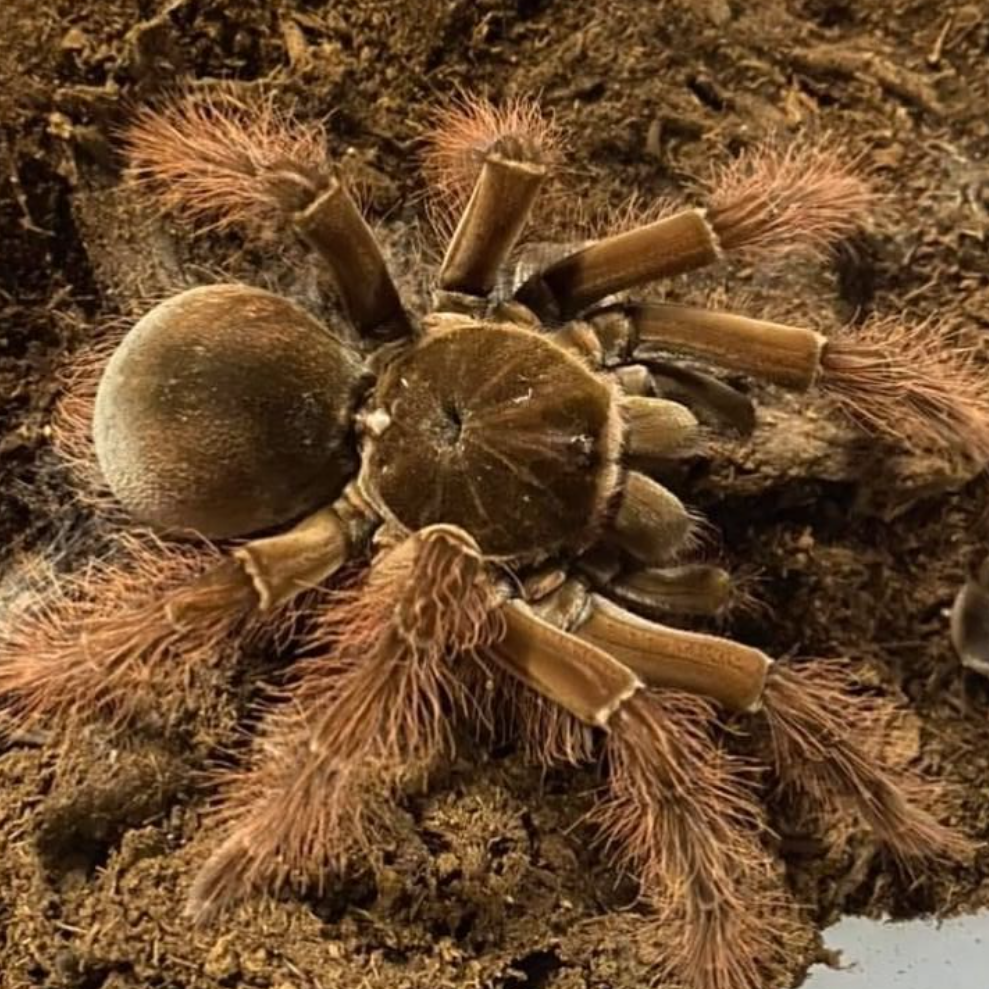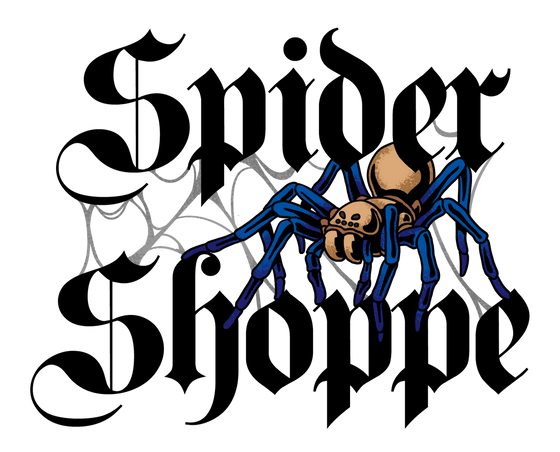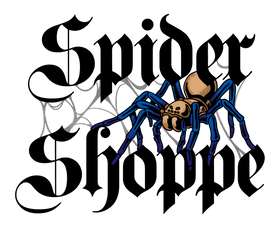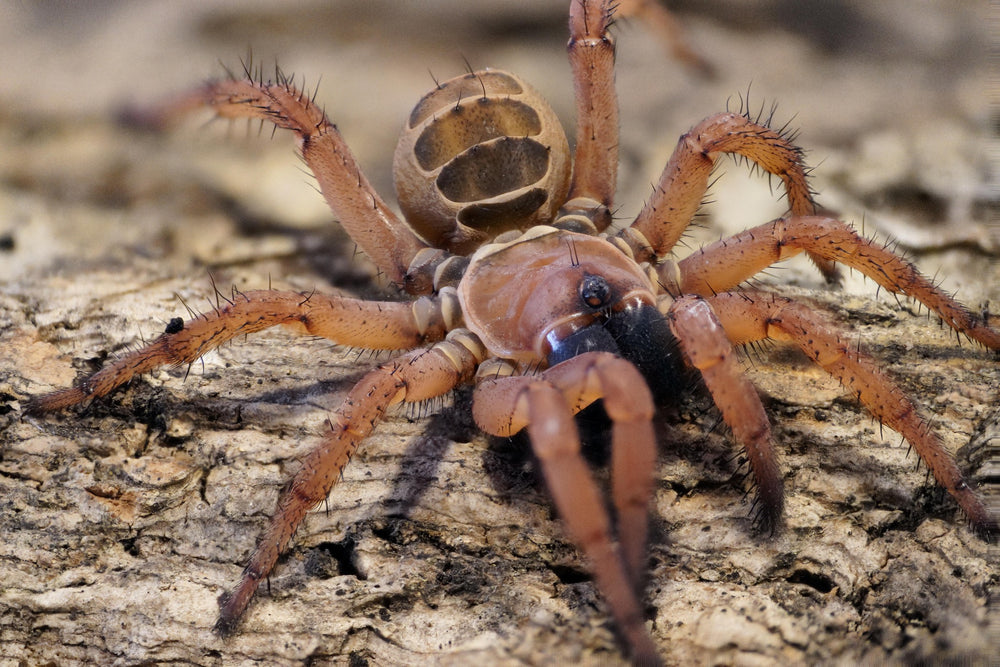
Theraphosa blondi (Goliath Birdeater) 3.5-4" MALE
- Live Arrival Guarantee
- Live Animals Ship FedEx Priority Overnight (Mon-Weds)
- In stock, ready to ship
- Inventory on the way
Touted as the "World’s largest spider," the Goliath Bird Eating Tarantula, Theraphosa blondi Latreille, is a titan of the arachnid world, native to Northern Brazil, Guiana, French Guiana, Suriname and South Venezuela. T. blondi attains mammoth diagonal leg spans of 10”-11” for females and around 9” for males. This species has a beautiful cinnamon tone to its brown base color, with faint pink striations along the legs. The body is primarily covered in a velvet-like layer of fine setae, long bristles along the legs, and a forest of substantial urticating setae on the abdomen.
In the wild, giant tarantulas such as Theraphosa, Lasiodora, and Pamphobeteus routinely ambush small vertebrates (reptiles, amphibians, and mammals). Field studies at a biological research station in the Peruvian Amazon suggest that a substantial amount of death amongst small rainforest vertebrates is due to arthropod predators such as these giant tarantulas. T. blondi specifically has been documented dispatching numerous species of snakes and antbirds.
Juveniles readily burrow and benefit from a deep, organic substrate that is constantly moist (not wet) in a cross-ventilated enclosure. T. blondi is the most moisture-dependent member of its genus, especially as adults. This species requires a consistently moist medium, between 80-90% relative humidity, and ample air circulation. The substrate should always be moist throughout most of the soil column. However, the soil surface should be allowed to dry periodically.
These spiders require large enclosures with plenty of floor space and cross-ventilation at maturity. Ensuring that the enclosure is not tall enough for the spider to climb and fall is essential, as fall injuries to the abdomen can be fatal for such massive arachnids. As such, large enclosures with cross ventilation, ample floor space, a deep substrate for burrowing, and a few large, sturdy, securely grounded shelters will help these giants feel at home. T. blondi are powerful spiders and can quickly dislodge cage furnishings if not secured, so make sure any cork slabs are not exceptionally heavy and wedged into a secure position. Molding a burrow into the substrate under a large cork slab is also beneficial, giving the spider a “cave” to occupy and construct its retreat.
A securely latched or weighted lid is particularly important for T. blondi and other giant tarantulas, as these spiders can easily climb glass walls and push open lids. Another critical consideration is avoiding using mesh in any portion of the enclosure, as tarantulas are adept at chewing through metal wire and escaping.
These defensive spiders will not hesitate to flick hairs and stridulate (hiss) loudly if feeling threatened. The urticating setae of T. blondi are notorious for being extremely irritating upon contact with mucous membranes. It is, therefore, advisable to take extra precautions and wear personal protective gear (safety goggles, face mask, and rose gauntlets) whenever cleaning the cages of T. blondi, especially if the substrate surface is dry. Additionally, Theraphosa will rub off and incorporate their urticating setae into their webbing. Be careful when disposing of older silk sheets from their enclosures. T. blondi is not a tarantula for beginners, nor is it handleable. A quiet, dark location with low foot traffic is ideal for situating their enclosures.
If maintained in a quiet, comfortable location, you can see T. blondi waiting to ambush prey at their burrow entrance in the evening hours. Although these spiders have a voracious appetite, and many owners show off their animals dispatching vertebrates on videos online, it is essential to refrain from throwing live mammals or reptiles into the cage, for both the prey and the predator's sake. In an enclosure, actively struggling vertebrates can mortally wound a tarantula, so if supplementing their diet with vertebrates, only use pre-killed prey (e.g., frozen-thawed mice, birds, or anoles sold for feeding snakes) and be sure to remove any uneaten food promptly to avoid pathogen exposure to the spider. If you are ready and have adequate space, working with the world’s most famous giant tarantula is a must!
References:
Latreille, P.A., 1801. Histoire naturelle, générale et particulière des crustacés et des insectes (Vol. 1). de l'imprimerie de F. Dufart.
https://amphibian-reptile-conservation.org/pdfs/Volume/Vol_13_no_1/ARC_13_1_[General_Section]_65-77_e169_high_res.pdf

Info on our shipping policy can be found on our T&C page.



